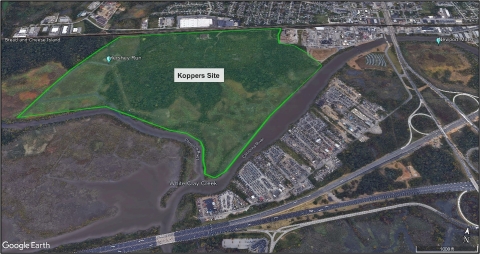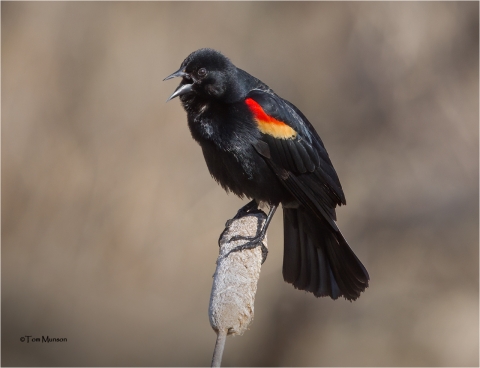Background
The 300-acre Koppers Co., Inc. (Newport Plant) Superfund Site is located along the Christina River and White Clay Creek near Newport, Delaware. Between 1929 and 1971, site owners operated a wood-treating facility, which primarily used creosote, a mixture of polynuclear aromatic hydrocarbons (PAHs) and other chemicals. Plant operations, spills, leaks, and waste management practices contaminated soil, sediment, surface water, and groundwater. The U.S. Environmental Protection Agency (EPA) listed it as a Superfund Site in 1990 and completed a Record of Decision in 2005 for a cleanup which was amended in 2022. The Site consists of tidal and non-tidal wetlands, Hershey Run (a tidal stream), uplands, and 3 small ponds. It provides habitat for at least 10 fish species, 5 amphibian species and 70 bird species.
Natural Resource Damage Assessment (NRDA)
The Koppers Natural Resource Trustees --State of Delaware, U.S. Department of Commerce, and U.S. Department of the Interior--are conducting a natural resource damage assessment (NRDA). The goal of the NRDA is to identify injuries to natural resources and evaluate what restoration needs, both type and amount, there are at the Koppers Superfund Site near Newport, DE. The legal authorities are the Comprehensive Environmental Response, Compensation, and Liability Act (CERCLA) and the Delaware Hazardous Substances Cleanup Act. The Trustees determined that studies need to be conducted to evaluate site-related injury to fish, amphibians, and birds. Once the studies are complete, the Trustees will use the results and other data to write a Damage Assessment Plan. Afterwards, they will propose restoration projects to compensate the public for lost ecological services.
Site Remediation and NRDA
The U.S. EPA Record of Decision calls for actions to reduce the human health and ecological risks from site contamination. Cleanup actions will include containment of creosote wastes on-site and reconfiguration of Hershey Run, (https://cumulis.epa.gov/supercpad/cursites/csitinfo.cfm?id=0300092). The estimated 3-year cleanup is scheduled to begin in 2024.
The NRDA studies aim to document the injury to natural resources that has occurred since 1981 (CERCLA start date) and will continue until the site is cleaned up. Thus, the NRDA field work must be finished before cleanup starts and alters site conditions.
NRDA Restoration
The Trustees will evaluate the results of the data gap studies, data from the Remedial Investigation, and literature to estimate the damages to natural resources at the Koppers Site. With the help of economists and restoration specialists, they will propose restoration projects to compensate the public for the loss of ecological services.
Data Gap Studies—see the individual study files for further details
Fish Studies:
Goal: Determine if there is evidence of contaminant-induced health impacts to fish collected from Hershey Run (HR) within the Koppers Site compared to a reference site, Newport Marsh (NM).
Approach:
- Conduct tumor survey with adult mummichogs (Fundulus heteroclitus): In 2002 and 2003, the percentage of mummichogs with liver cancer was significantly higher in HR vs. NM. Tumors are specified in the NRDA regulations as a biological injury; this survey will be repeated in 2023 to calculate injury over time.
- Conduct laboratory exposure of fertilized mummichog and sheepshead minnow (Cyprinidon variegatus) embryos to a gradient of PAH-contaminated sediment from HR to evaluate possible reproductive injury.
Amphibian Studies:
Goal: Determine if there is evidence of contaminant-induced reproductive effects in amphibians.
Approach:
- Conduct laboratory exposures with African clawed frog (Xenapus laevis) to a gradient of PAH-contaminated sediment from the Koppers Site to evaluate possible developmental injury.
Bird Studies:
Goal: Determine if there is evidence of bird injury by comparing exposure and response to PAHs in birds at the Koppers Site and a reference site (Blackbird Creek or Augustine State Wildlife Management Area, about 20 miles to the south) and with literature values.
Approach:
- For exposure: Measure PAHs in invertebrate prey items (earthworms, insects, snails, and spiders), and blood and eggs of American Robin, (representative upland species) and Red-winged Blackbird (representative marsh species).
- For response: Determine adverse effects in blood such as hemolytic anemia through clinical chemistry and other analyses.


